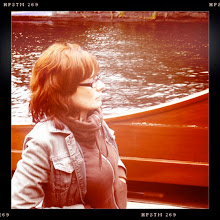The Awesome Foundation and Fab Lab
I heard about these organizations – The Awesome Foundation and the MIT Fab Lab – last week on WAMU's Metro Connection. The Awesome Foundation is a "worldwide network of people devoted to forwarding the interest of awesomeness in the universe." How it works is that a group of ten people come together and contribute $100 each a month. Each month by consensus they choose one applicant, who is planning something "awesome", and grant them $1,000. The Awesome Foundation does not claim any stake in the the grant winner's project and their are no strings attached to the grant. The foundation is geared mostly towards art and science projects that have a community outcome, but it's pretty open and anyone can apply for a grant.This episode of Metro Connection talked about the new DC chapter of The Awesome Foundation and their first grant that they gave to Phyllis Klein who is currently operating the mobile DC Fab Lab.
There is an interesting Ted Talk with MIT professor Neil Gershenfeld about the Fab Labs. He says that, "we are now in the PDP (Programmed Data Processor) era of digital fabrication." What he means is that PDP's were the transition from mainframe computers to the mini computer. When the technology started to transition from large organizations into the general public's hands and were popular amongst the early hacker culture.
More and more we are seeing a new group of makers. Mass production is being brought down to an individual scale. Within ten years we'll probably start seeing personal laser cutters in people's homes. It is interesting, because both of these organization are empowering ordinary people to be creators and makers. Trying to remove some of the boundaries that prevent people from realizing their ideas.





0 comments:
Post a Comment